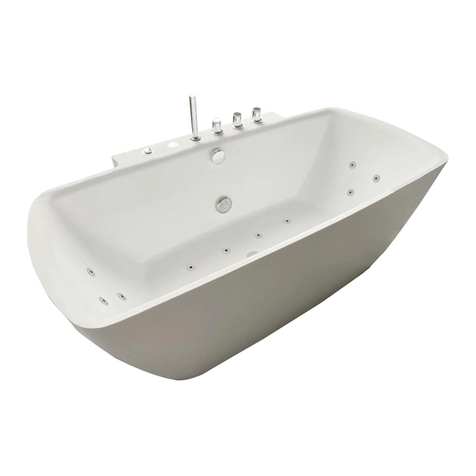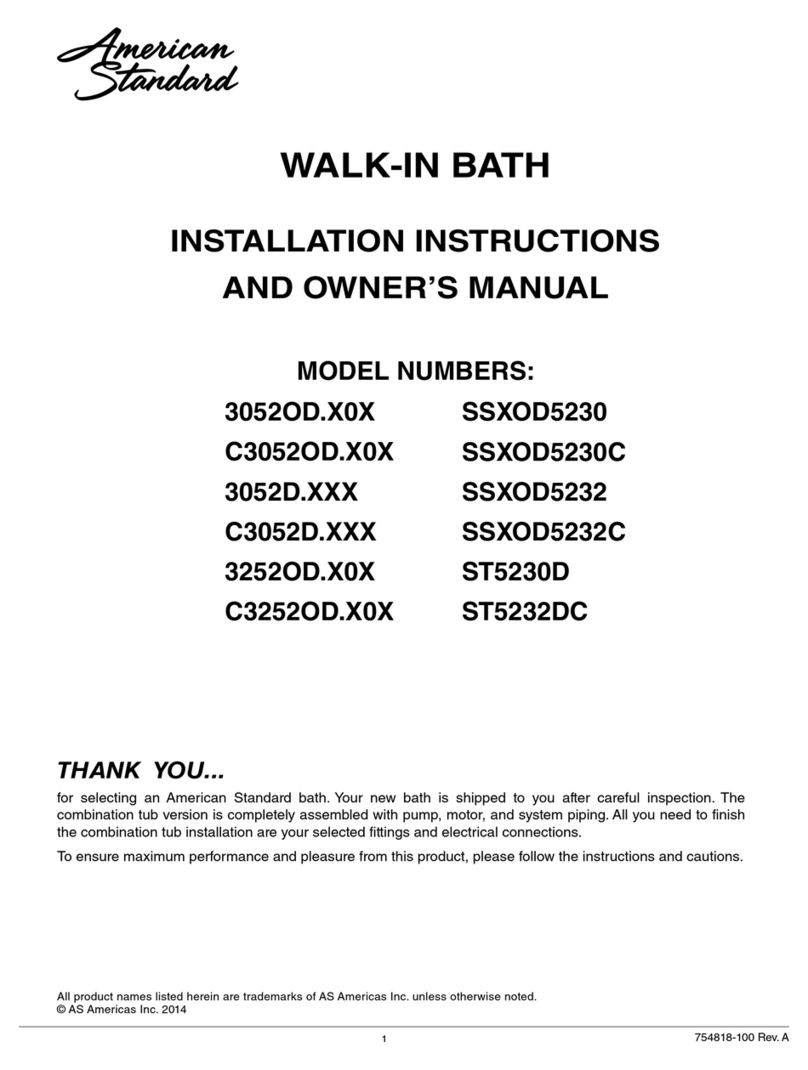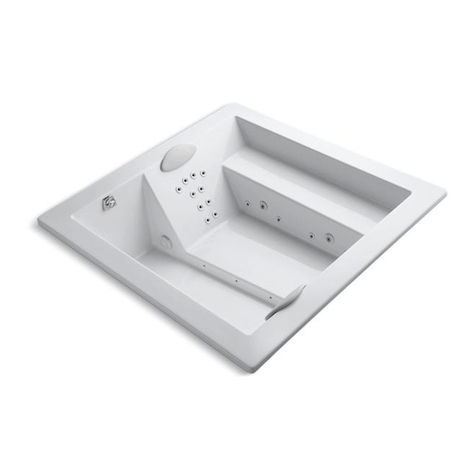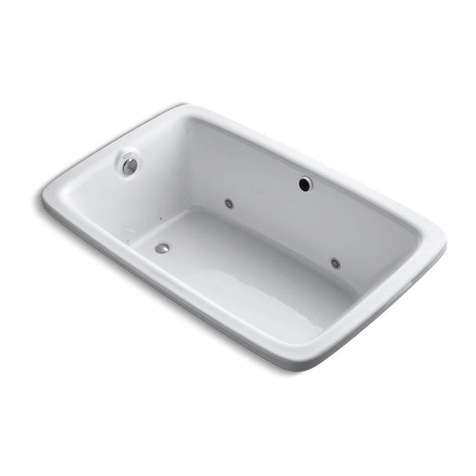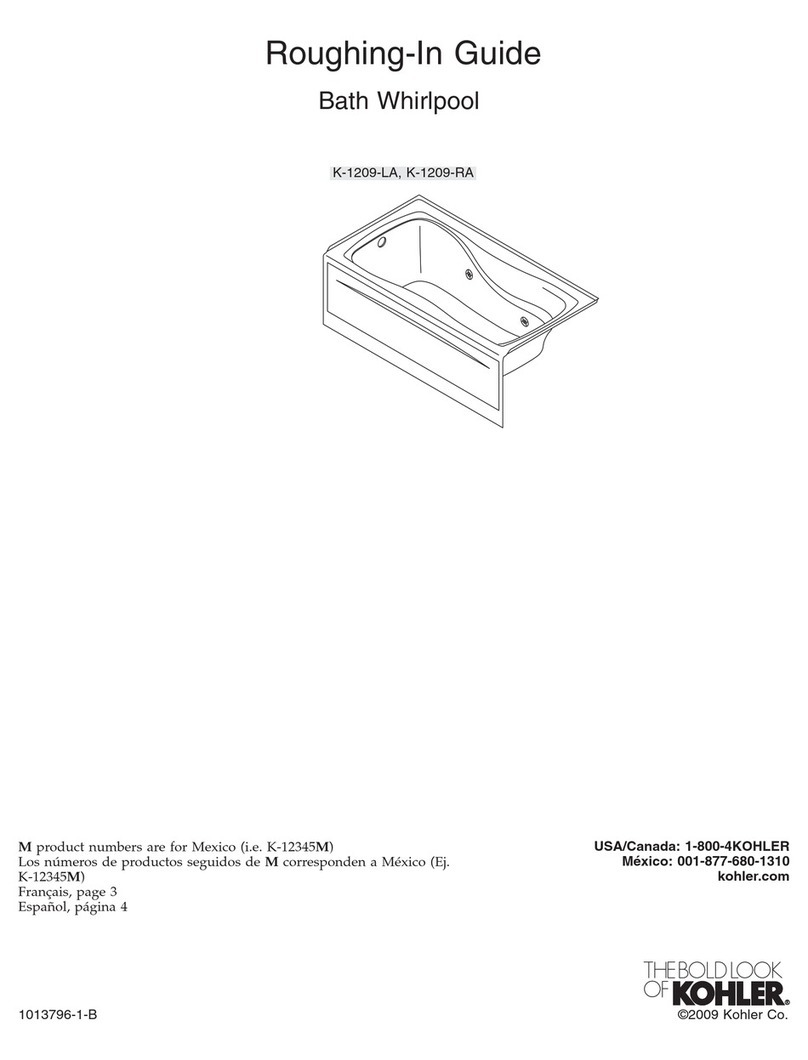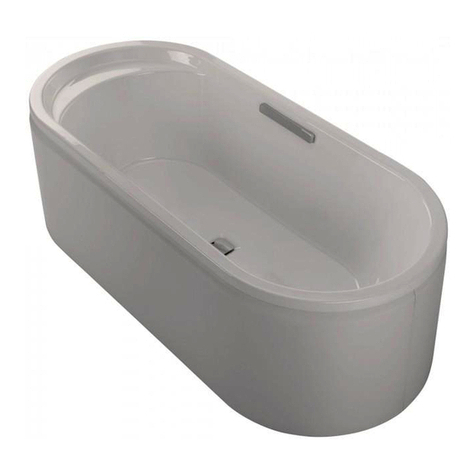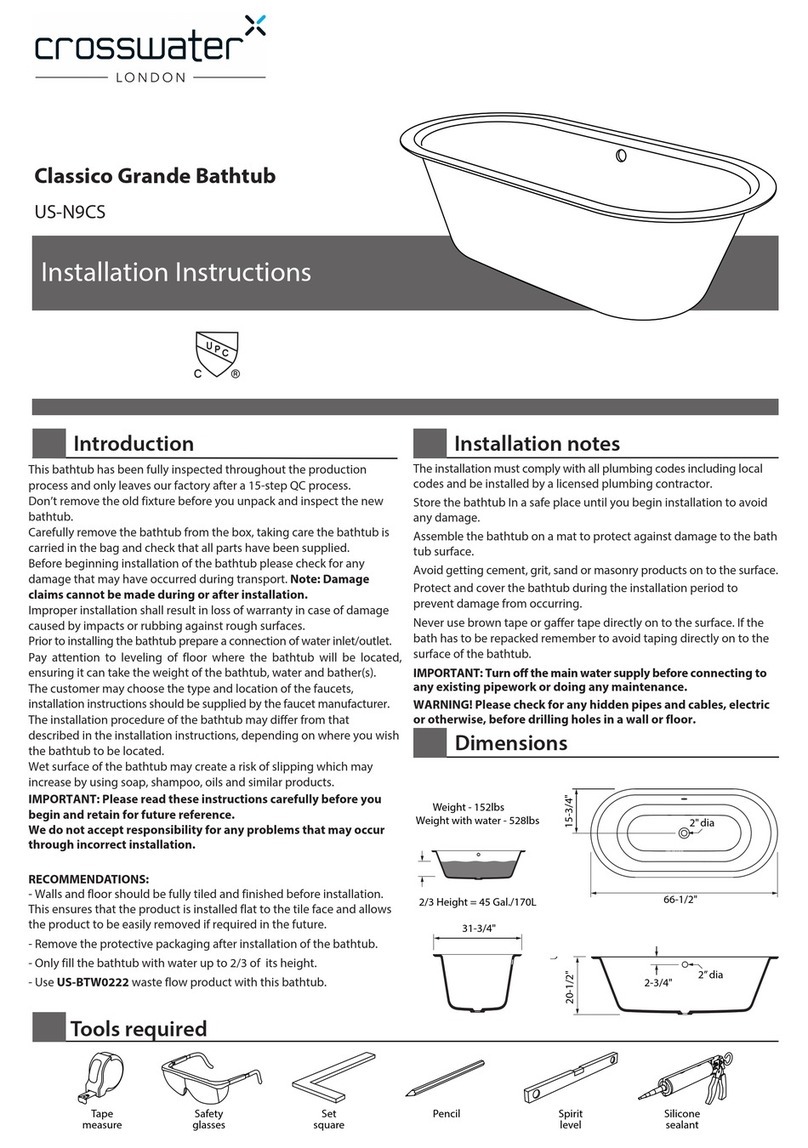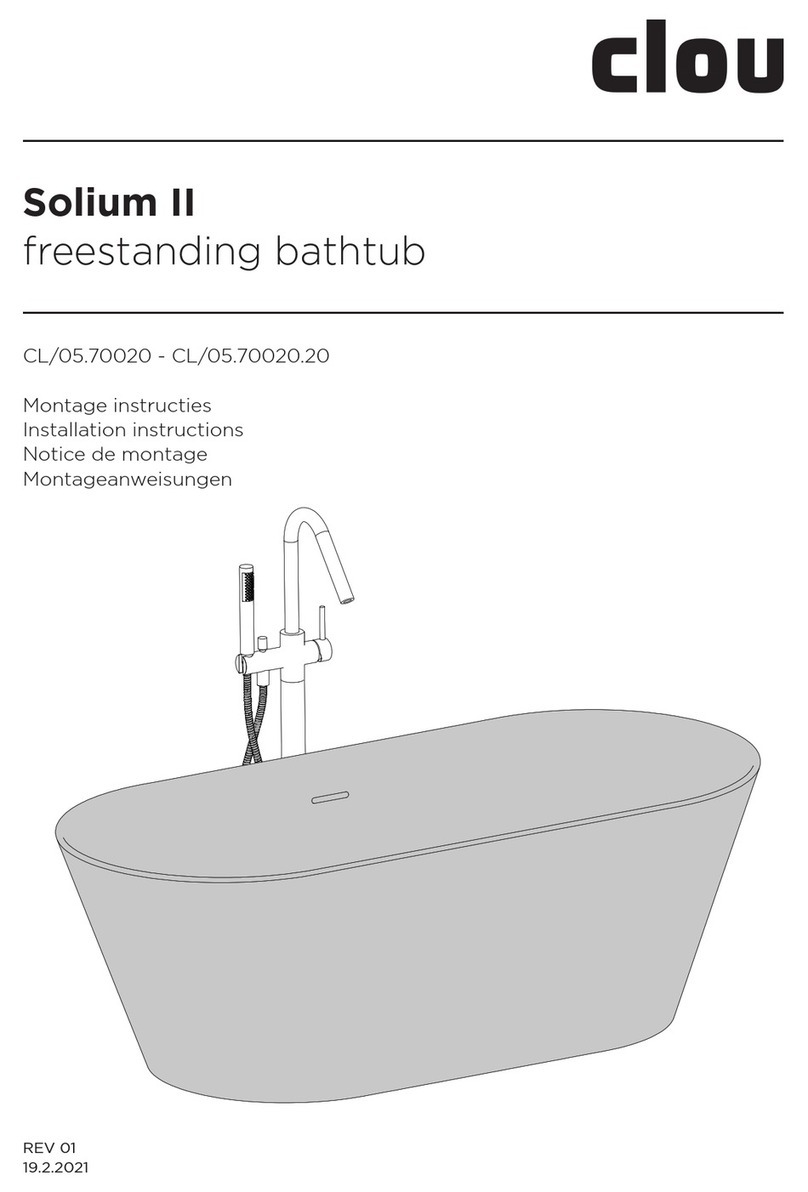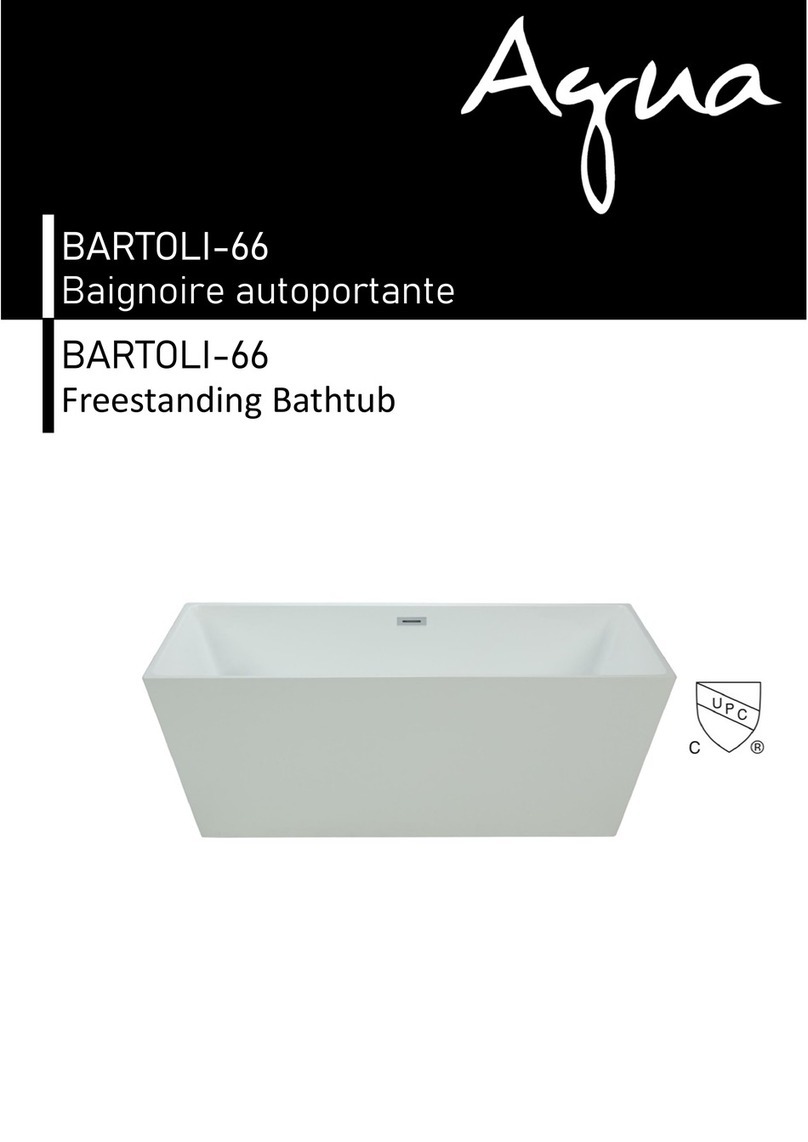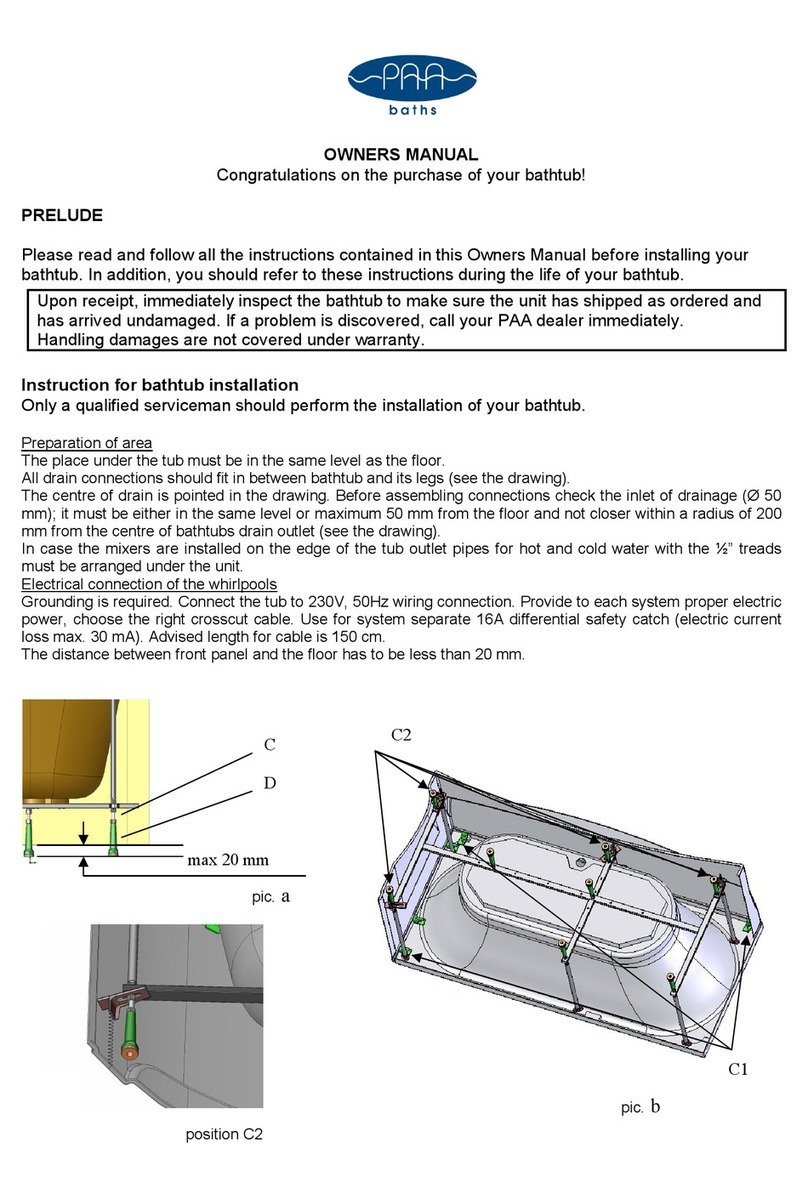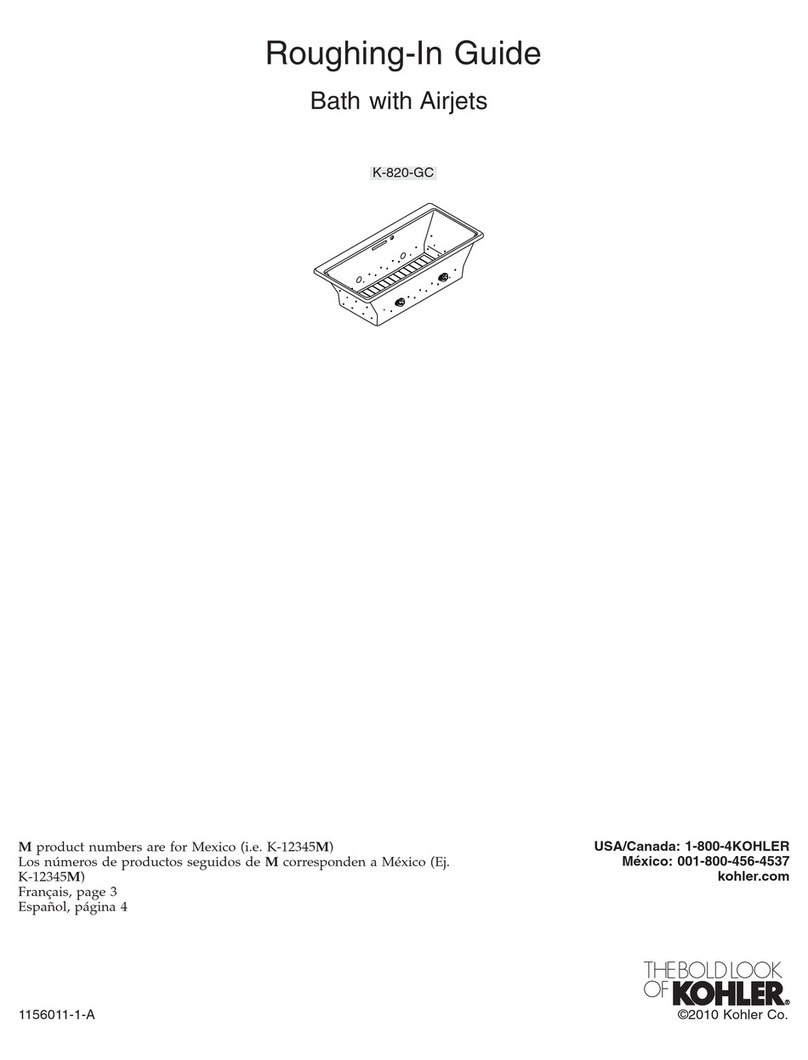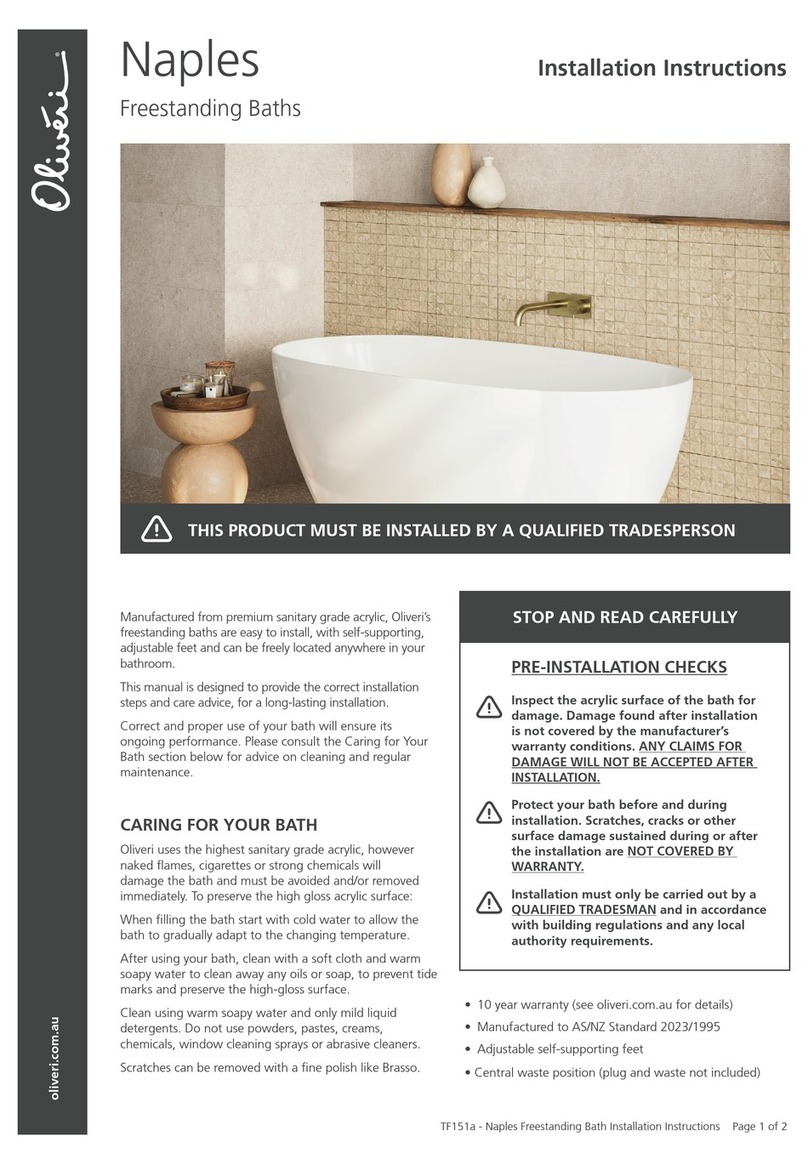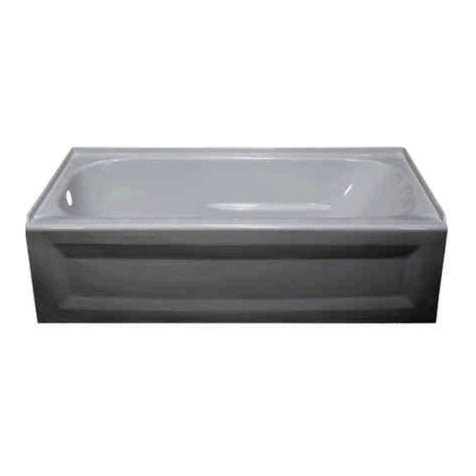3.1 A concrete pad forms an excellent base for your tub.
A properly poured 4” reinforced pad will be stable and
resistant to frost heave. Size the pad so that the sides are
about as long as the diameter of the tub. Example: For a
tub 6’ in diameter, pour a 6’ x 6’ pad.
3.2 A gravel pad can be a simple foundation for a tub in
some cases. If the ground on the site is compact and
stable soil, sand, gravel or rock; a layer of pea gravel (or
course sand) on top can be used to establish a level
foundation for your tub. However, if the soil is unstable,
soft, duffy or muskeg, a gravel pad will settle unevenly
under the weight of the tub and is not a good choice. If
you choose a gravel pad, make it larger than the diameter
of the tub by about 3 feet. Example: For a 6’ tub, make
the pad 9’ in diameter. The thickness can vary depending
on how much gravel is needed to level the site.
Typically, 2 to 4 inches is sufficient. Smooth with a rake
and check with a carpenter’s level.
3.3 Another alternative is to use adjustable concrete pier
blocks as a foundation. This type of pier block is
available at most home improvement stores and allows
you to adjust the level of the tub after it is in place. Piers
can be set into the ground to make a solid foundation for
the tub. This method involves building a small but strong
wooden frame or cribbing to support your tub.
Typically, four piers should be used, and the wood
timbers should be 4” x 6” or bigger. The bottom of the
piers must rest on stable material. See Figure 3.3 for an
example.
Figure 3.3 Pier block foundation
3.4 Another option is to install the tub on a deck.
Installation on a wooden deck can be a good choice.
Be sure that your deck has been designed to support
the weight of a full tub (1500 - 8000 lbs. depending
on the size of the tub). Have the deck inspected by a
qualified architect or building engineer prior to
proceeding. See Figures 3.4 for deck installation.
Figure 3.4.1 Tub surrounded by deck or on top of deck.
If surrounded by a deck, the deck can hide the heating
system plumbing. If on top of deck, the beauty of the tub
can be better appreciated.
Figure 3.4.2 Tub on perimeter of deck with stairs on each
side. This arrangement allows for plumbing to be hidden
under the deck and for most of the tub to be seen. Good
choice for any heating system.
